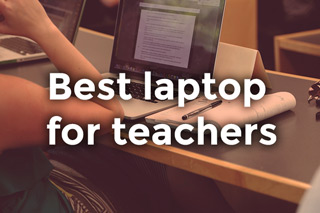
First off, we’ll need to figure out what you need personally as a teacher. Keeping that in mind, I’ll guide you through the general requirements on how to pick a great laptop for teaching. And finally, at the very end, I’ll give some great options to choose from.
What am I looking for in a laptop for teachers?
Personal requirements for a teachers laptop
Personal requirement What do you teach?
First of all, elementary school teachers have a bit more freedom than the others. For an elementary teacher, I’d suggest just going forward and buying whatever suits their lifestyle best. And any of my recommendations at the end of the article should suffice them. Just pick what you fancy the most and what matches your budget.
If you’re teaching a single (or a couple of) subjects, there can be additional requirements that only you are aware of. Usually, these needs are not explicitly stated. I suggest spending 5 minutes to imagine yourself going through the day. Sometimes, even listing out what frustrates you with the current laptop can show what is important to you.
For example, a PE teacher might strongly prefer a lighter laptop so it’s very easy to carry. Also, a very bright screen would be crucial whenever the laptop is taken outside. This is especially important in mostly sunny states. Then, having even a slightly above average display will not be enough.
Please take at least a few minutes to go through your day and write down how you’ll be using your laptop. These small adjustments will help you to evaluate my recommended laptops and to find new ones. Though for the majority of teachers, the general requirements I’ll lay out in a minute will cover most problematic areas when using a laptop for teaching.
Also, are you primarily teaching online? If so, you might have a bit more room to move around than other teachers. Online teachers generally rely on online platforms which are platform-agnostic. That’s a fancy way to say that Windows, MacOS X, Linux laptops, and Chromebooks are all fine for you. Also, online teaching allows to not be so restrictive in most areas. In that case, even a higher-end Chromebook is a viable choice unless you’ll be teaching students how to use some particular piece of software. At the same time, online teachers are the only ones that can very reasonably buy a desktop-replacement laptop and not be troubled by its weight. All in all, for a laptop for teaching on the web, there are more right answers than wrong ones.
Personal requirement Operating System
Do you prefer one Operating System over any other? Or in most cases, do you HAVE to get some particular OS? In most cases, a teacher should look to laptops with Windows and MacOS X. This means 90% of laptops out there are still on the table.
In result, Chrome OS is left out in most discussions about laptops for education. Education is a slowly moving industry which means most of the software you’ll be using for your work is either on Windows or MacOS X. This usually is your school’s policy or at least getting a wrong one becomes an inconvenience when working with others. Luckily, nowadays OS is more of a preference than a hard requirement. But just in case, make sure, you will not need to use some archaic grading software which was designed only for Windows.
It is generally recommended to have the same OS as your students do and in a vast majority of cases, Windows is still the dominant player in the market. Though MacOS X is still a viable option if you strongly prefer it over Windows.
Personal requirement Size
Do you have any size preferences? There are 4 size categories you should consider:
- Very large (17″) – is a viable option only if you will not be carrying the laptop regularly
- Classic large (15.6″) – the most popular size for the longest of times. It gives enough screen estate for serious work while being reasonably portable.
- Small (13.3″) – an increasingly popular choice in the past few years. Great for taking the laptop in and out. These laptops usually have great battery life and a good enough app performance for any type of teacher.
- Very Small (11.6″) – best when you need a very small laptop on-the-go. At the same time, it is a problematic choice due to its screen size. I would recommend very small laptops only if it will be your computer.
Now, I’ll start off listing 3 MAJOR and 3 MINOR requirements. You should pay a lot of attention to the major ones and according to your budget, check a few of the minor ones.
Major requirements for a best laptop for teachers
Major requirement Good battery life
I know that you’ll have a socket to plug your laptop in but nevertheless, a solid battery will pay in dividends whenever you’ll be working off-the-grid. In our specific case, I’d recommend 5 hours of battery life but reaching a full 8-hour workday is definitely a major plus.
Major requirement Solid State Drive
A good SSD can push the needle more than an expensive processor can when it comes to general application performance.
This type of storage has become a standard in the past 3 years and there are a million reasons why. It speeds up startup and shutdown times drastically. It is less prone to damage, it lasts longer without, it’s light, it consumes less power, it doesn’t need defragmentation and so on.
Most but not all laptops above $1000 will have one installed. But even some entry-level notebooks can have a solid 250 GB drive built-in – I’ve found some great options on the cheap.
Meanwhile, if you could spend over $1000 on a laptop for teaching, you should consider getting a laptop with 500 GB of storage. That should leave you enough of headroom for years to come.
Major requirement Upper-mid range processor
There’s a lot of small details when it comes to choosing a processor. But we can use a few basic rules of thumb to pick out a target we’d be happy with.
For example, in the last few CPU generations, Intel Core i7 has become the go-to option even for basic models. That’s because there’s a wide array of options within the i7 processor line.
For most teachers, especially those in need for a strong battery runtime and high-end performance, I recommend looking for laptops with i7 U series – the processors that end with an “U” in their model code/number. “U” stands for Ultra-low power consumption. Usually, that means they consume up to 1.5x less energy than the HQ and 2x less than the unlocked HK models.
HQ might be a good choice for IT teachers and those that can either ignore battery life or can spend enough to match the powerful processor with a more powerful battery. Usually, only top-of-the-line Windows laptops and best MacBook Pro models can brag of achieving that.
One more thing, having 8 GB of RAM memory is a requirement I insist on by default (with Chromebooks and laptops under $500 being the only exception). I would be very surprised if you’d need more memory than that.
Minor requirements for a teacher’s laptop
Minor requirement Lightweight
The importance of this requirement depends on your size preference. Nevertheless, there are few drawbacks of opting for a lighter laptop. And these possible problems of a lightweight laptop do not apply to teachers.
And there is one huge benefit of a light notebook (take a guess). If you spend a lot of time with your computer, a lightweight laptop would be a blessing. Some people don’t stop to think about how a lightweight laptop would impact their day, especially if they had a bulky machine in the years prior. Having a lighter laptop does not mean it will simply be easier to carry. It also means you’ll just start taking it to more places and you’ll start using it as somewhat of a tablet.
Lightweight laptop, in essence, means a small laptop (~13″). These usually weigh 2.9 lbs (1.3 kg). Meanwhile, 15-inch ultrabooks weigh around 4.4 lbs (2 kg).
Minor requirement Bright screen
The best laptop for teachers needs to have a truly bright screen. Out of all display metrics, it has to be the #1. Using a laptop in school, in essence, means working beside a window and a poorly lit display would produce too much glaring. Furthermore, taking it outside begs for even a brighter display. And even if you’ll keep it indoors, every teacher will appreciate a crisp display. In practice, I’d target to 300 cd/m average screen brightness which is roughly equivalent to maximum ~325 cd/sq. meter. On top of that, the screen should have an IPS panel as they produce great viewing angles. That will give your laptop a vivid premium look whenever you’ll need to show something to students or other teachers.
Having a strong white-to-black contrast and a wide color gamut would be great additions but even an average screen in that regard will suffice. And then, every other display spec is pretty much irrelevant.
Minor requirement Additional ports
Many classrooms still have old projectors (if they have one at all). Those operate through a VGA connection which is hard to find in smaller laptops. Having this VGA/D-Sub port would be a great addition for projectors that do not support a newer HDMI standard. But don’t be afraid to buy a laptop without it – there are plenty of converters and adapters to solve this issue.
But having HDMI, DisplayPort or a ThunderBolt III via USB 3.1C port is absolutely mandatory. You’ll need at least one to connect to any external display or classroom projector. Moreover, having 2-to-3 USB 3.0 ports should be enough to connect any external devices: USB thumb drive, mouse, keyboard, external drive and CD/DVD reader if it’s needed and the laptop doesn’t have one.
Finally, online teachers don’t need to worry about ports much at all – just match your peripherals. For most that simply means going up to 3 or 4 USB ports.
Optional requirement Nice-to-have features
- Full backlit keyboard can likely save a few minutes of your time each day
- Touchscreen – nice addition that goes really well with 13″ ultrabooks in particular
- 2-in-1 convertable design – ability to flip it over and display it as a tablet or a tent will come in handy while at school and back home
- Dedicated graphics card – an essential for gamers
My recommended laptops for teachers
ASUS F555LA-AB31
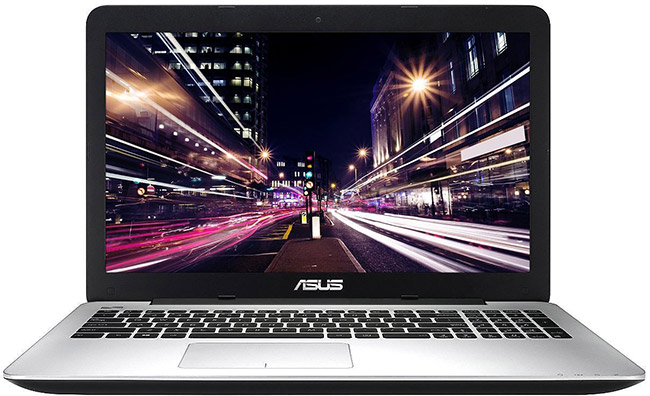
As always, I’ll start off with the cheapest option first. This laptop does not pass all requirements but is good enough to beat every other laptop in this price range.
This laptop has very basic set of hardware – entry-level Core i3 processor, only 4 gigs of RAM and 1 TB storage. But the real reason why it’s head and shoulders above other similarly priced notebooks stems from its IPS screen and decent battery life. Asus has done a good job balancing this laptop where the price is ridiculously low but there’s nothing essential missing. As a nice bonus, this laptop comes with a VGA port which simplifies hooking up older classroom projectors and monitors.
The one major downside is its poorly lit display and I would not recommend it for outdoor use.
ASUS Zenbook UX305FA-USM1
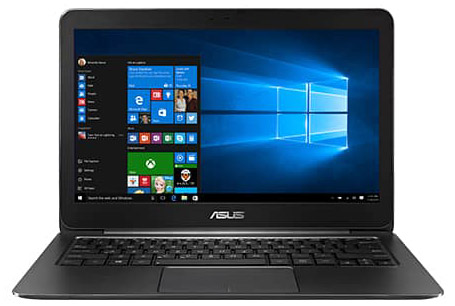
Asus ZenBook is the ultimate portable laptop under $700. It is extremely light and it packs enough juice for a full workday. Unlike most laptops in this price range, it comes with a bright, vivid screen with 1800p resolution.
It also has a medium-sized SSD which will tremendously shorten start up and shut down time. I also have to give props for its dead-silent fanless design. Since it has a low-power-consumption processor, it can afford to throw out the fans altogether. Though, that means that the laptop can get quite hot as the day drags on. Finally, despite its size, there are all essential ports: 3 USB 3.0, HDMI and DisplayPort.
One more thing to note, this notebook quickly reach its performance limit but it’s enough for most school/office work. Also, it does not have a backlit keyboard.
To sum up, this laptop is an amazing deal for its price.
Acer Aspire V 15
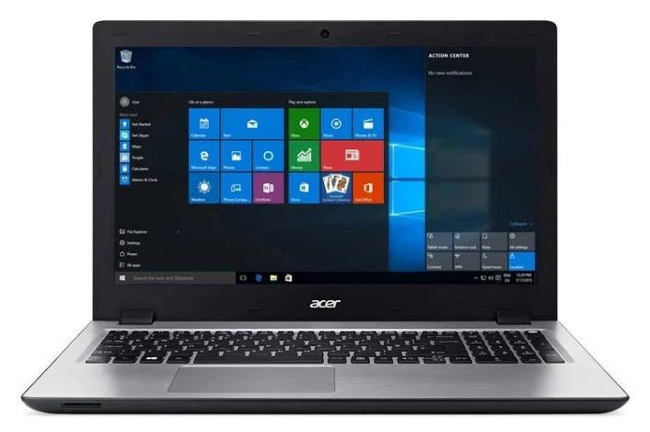
Unlike previous models, this one is all about performance and top-notch hardware. It has an Intel Core i7 processor, more than enough memory and plenty of SSD storage.
It has an above-average screen (Full HD, IPS panel, 310 cd/m avg. brightness, 1000:1 contrast and ~80% sRGB coverage) and a slightly below-average battery life which is understandable considering its processor and display size. It also packs in a touchscreen, HDMI, VGA and 3 USB ports to fully round out the package.
Any teacher looking for a 15-inch sub-1000$ laptop should consider this laptop. This laptop is especially good for online teaching as its pros/cons match “work at home” lifestyle.
VAIO Z 13.3
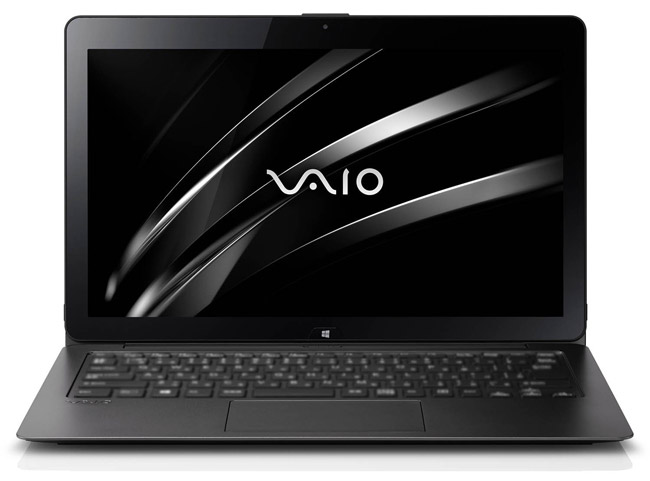
VAIO (previously known as Sony VAIO) has released some great laptops in their Z series and this one is best suited for teachers.
Right off the bat, you should pick this ultrabook if you need your laptop battery to last as long as possible. This VAIO Z can last up to 10 hours of constant web browsing over Wi-Fi. Of course, this figure goes up when the laptop is left idle and it goes down when you ramp up screen luminance. But even then, VAIO Z 13.3″ is still one of the absolute best when it comes to battery life considering its mid-range processor.
Finally, it has great screen resolution and color depth but when it comes to brightness and contrast – VAIO Z is just about average. Also, its storage might be limiting for some.
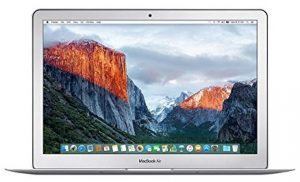
Thanks for taking time out of your day to read this article. If you’ve reached this far, I bet you’ve found this lengthy post helpful. If so, don’t forget to share it with your colleagues and don’t hesitate to leave a response down below!

